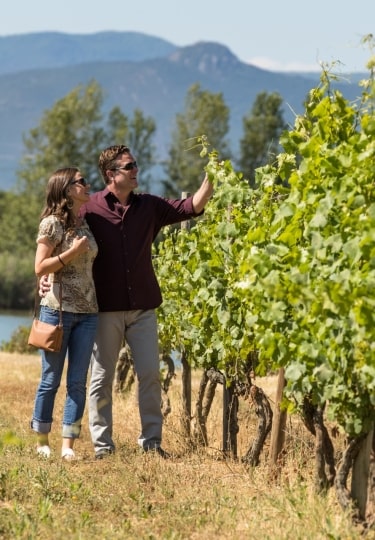What is Tuscany known for? This central Italian region is so over-endowed with treasures of all kinds that it’s hard to know where to start.
Tuscany is one of Italy’s regional heavyweights when it comes to culture, with its immense Renaissance heritage. It’s also the former power base of the Etruscans, the precursors of the ancient Romans, and their legacy is a fascinating one to uncover.
But this region isn’t just for art and history buffs. From its sinuous beaches to its delicious wines this picturesque region engages on many levels.
Florence

Florence
Described as the “Cradle of the Renaissance,” Florence is Tuscany’s regional capital. Set amid rolling hills, this beautiful, thriving city is one of Italy’s most historic.
During its period as an influential medieval republic and duchy the patronage of the influential Medici family enabled artists and architects of the Renaissance period to evolve a new, unified aesthetic vision.
Strolling the cobbles of the city’s historic center, or centro storico, designated by the remains of its 14th-century town walls, you’re immersed in artistic masterpieces.
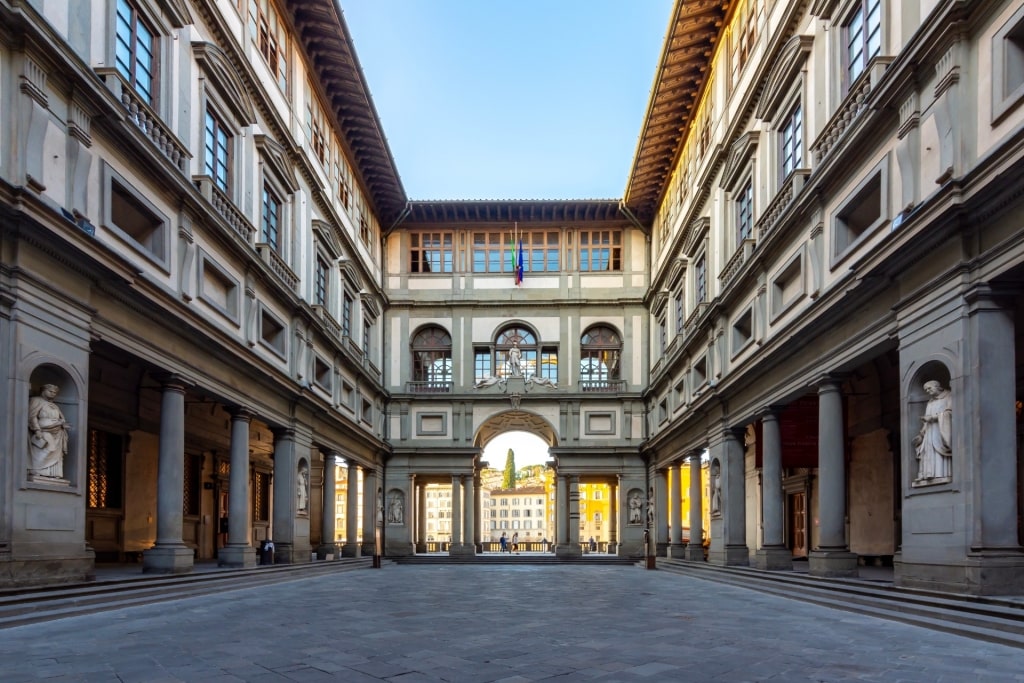
Uffizi Gallery, Florence
Whether you’re stepping into the hallowed corridors of the Uffizi Gallery or seeing the sculptures in the Piazza della Signora, this beautiful Italian city delivers on its promise as a cultural heavyweight.
What makes Florence special is how life in the city is not entirely yoked to its past. This sophisticated, cosmopolitan city is thriving and forward-looking, with outstanding cuisine, world-class shopping, and hipster aperitivo spots.
Read: Two Days in Florence
The Renaissance
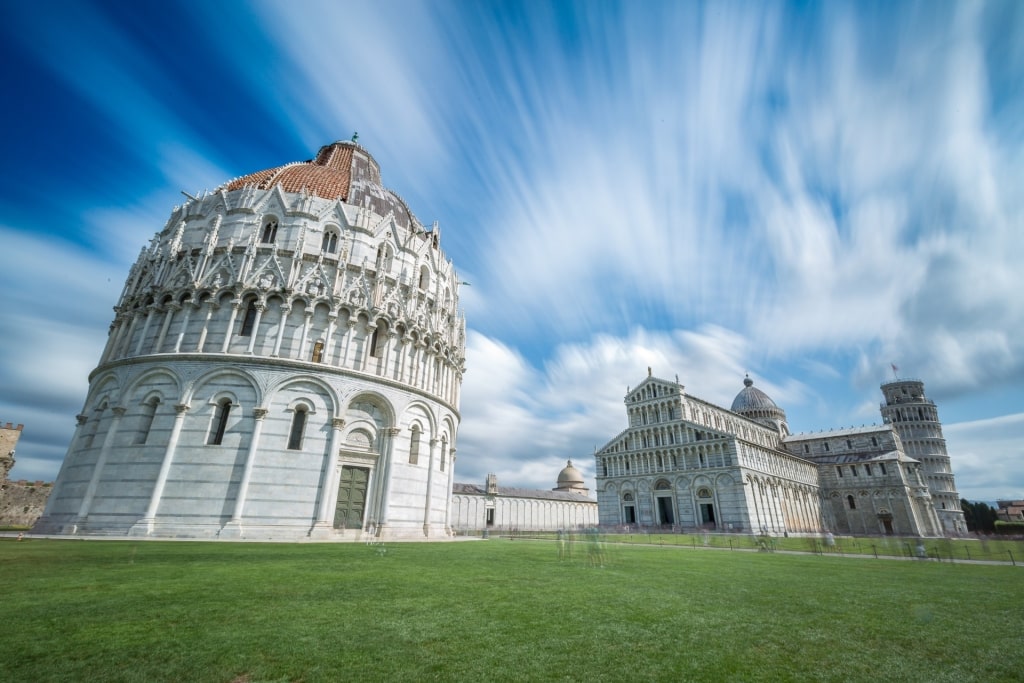
Piazza dei Miracoli, Pisa
If you asked an Italian, “What is Tuscany famous for?” they’d likely answer, “Il Rinascimento,” which translates as “The Renaissance.”
Florence’s Uffizi Gallery, with its collection spanning 500 years, is Italy’s leading art gallery.
Exhibited within are the immortal works of artists such as Leonardo da Vinci, Giotto, and Caravaggio. And, before you impulse buy one of the miniature David statues on sale from countless Italian souvenir stalls, go see the full-height original in the city’s Accademia Gallery.
While it can sometimes feel as if Florence is keeping all the art to itself, there’s more than enough to go around the rest of the region.
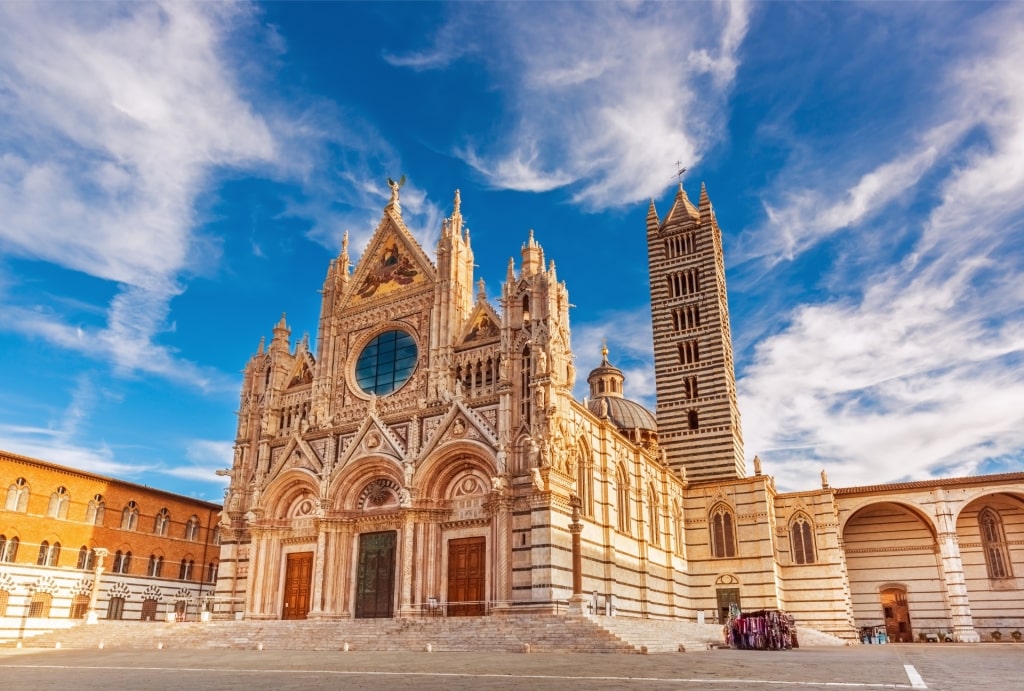
Siena Cathedral
Travel to the gorgeous hilltop city of Siena, and you’ll see a wealth of masterpieces in its striking cathedral, as well as in the Duomo’s dedicated museum. Or see the Piazza dei Miracoli, the Square of Miracles in Pisa, the home of Pisano’s Pulpit, an artwork considered the creative spark for the Renaissance.
Cuisine
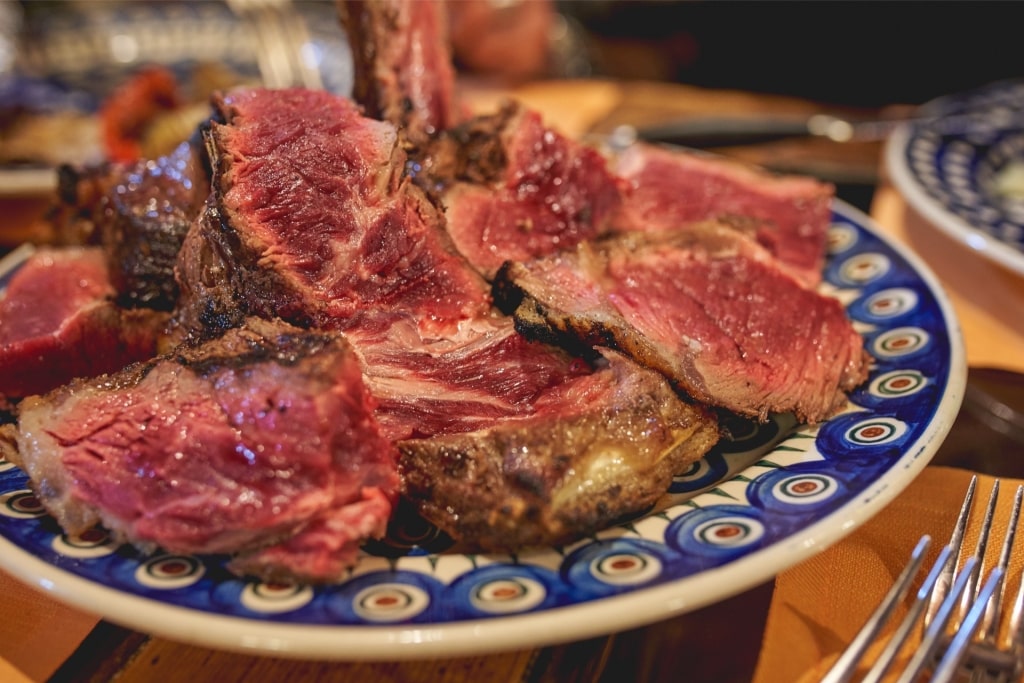
Bistecca alla Florentina
Historically, Tuscans have been teased by their fellow countrymen for being “mangiafagioli,” or “bean-eaters.” And while pulses liberally feature in their cuisine, it’s far from the end of the story when it comes to Tuscan food.
However, this region is, even for Italy, particularly vegetarian-friendly. One of Tuscany’s most iconic dishes is the vegetable stew, ribollita. This classic comfort food originated from the leftovers of noble banquets, as the name “re-heated” suggests.
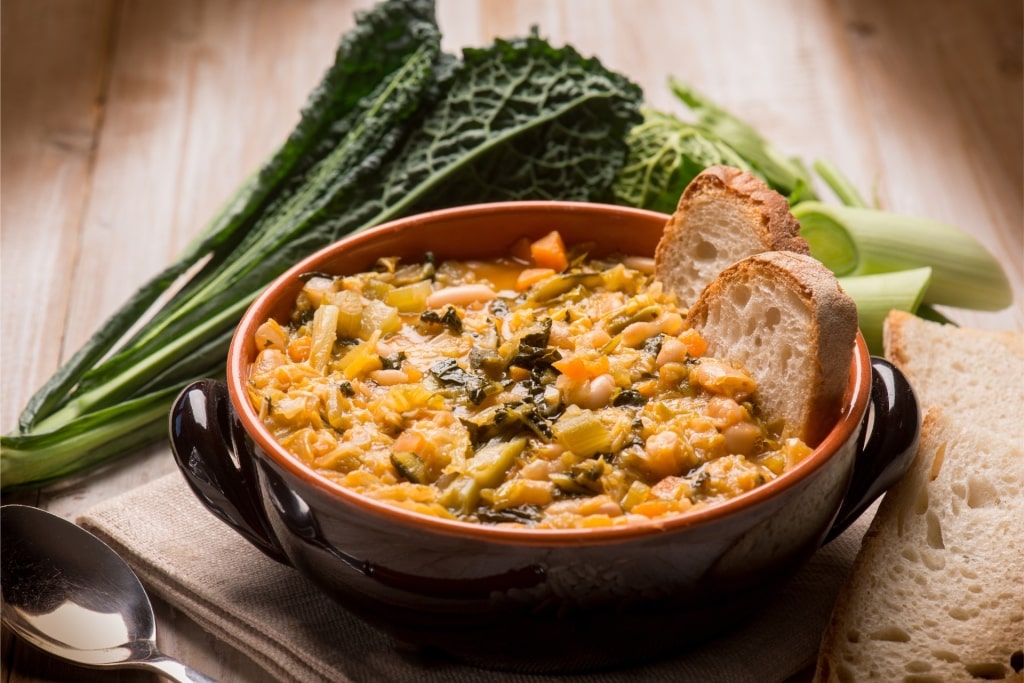
Ribollita
Ribollita is often served with another Tuscan peculiarity, the pane sciocco. This large rustic loaf is made without salt, which helps it balance well with the region’s relatively salty salumi. Of course, it also means that the bread stales quickly. Naturally, the ingenious cooks of Tuscany have incorporated stale bread into recipes such as the revered pappa al pomodoro.
For pasta lovers, you’ll enjoy pici—the deliciously thick cousin of spaghetti that was once hand-rolled by the Etruscans. However, what Tuscany is known for in terms of cuisine is really Bistecca alla Florentina or the “Florentine Steak”, ironic for a region so rich in bean and vegetable dishes.
Wine
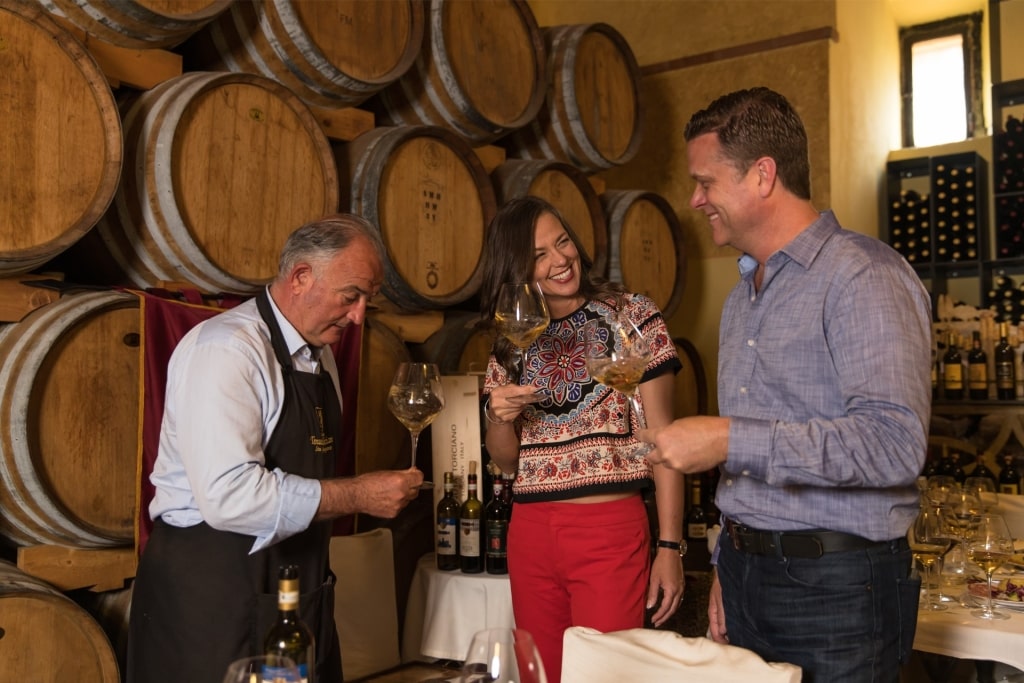
Wine
Tuscany is one of Italy’s best-regarded wine-producing regions. Its vinicultural heritage stretches back 2,500 years to the Etruscan era.
Today, much of Tuscany’s output is dominated by the Sangiovese grape. This varietal is what Chianti Classico wine is made from, hailing from the picturesque wine region of the same name.
Another reliably delicious wine is Montepulciano. This tipple is vinified close to the stunning hilltop Tuscan town of the same name, located on the region’s eastern border. Meanwhile, aficionados will be drawn to the so-called Super Tuscans—essentially Italian wines made in a Bordeaux style—and the prestigious Brunello di Montalcino.
Il Palio di Siena
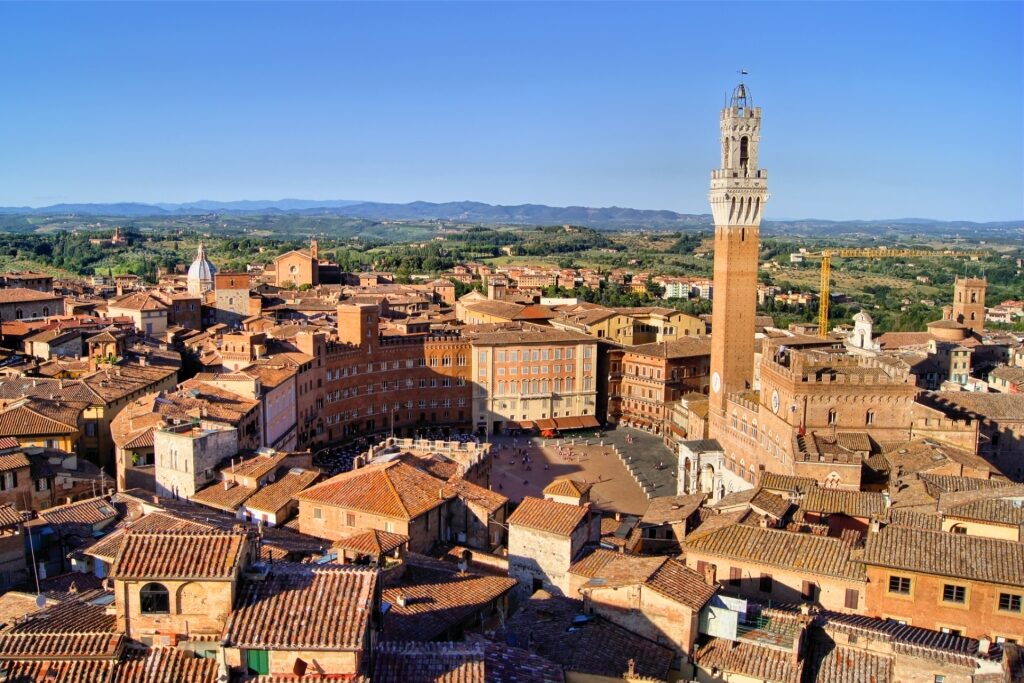
Siena
The Palio is a twice-annual horse race that kicks up dirt and passions in the UNESCO-listed city of Siena.
The contestants for the Palio are drawn from the city’s 17 contrade, or neighborhoods. In the two weeks running up to each event, held in July and August, the city’s atmosphere becomes notoriously tribal.

Il Campo, Siena
The race itself takes place in one of Italy’s most handsome squares, Il Campo. The square is in fact oval-shaped and patterned with brick that is softened with earth for the event.
Conceived in the 17th century, Il Palio is garbed in medieval costume and tradition. It’s not a long race—on average around a minute and a half—and riders often fly off on the sharp turns. Fortunately for the fallen, a riderless horse can still steal the win.
Fashion
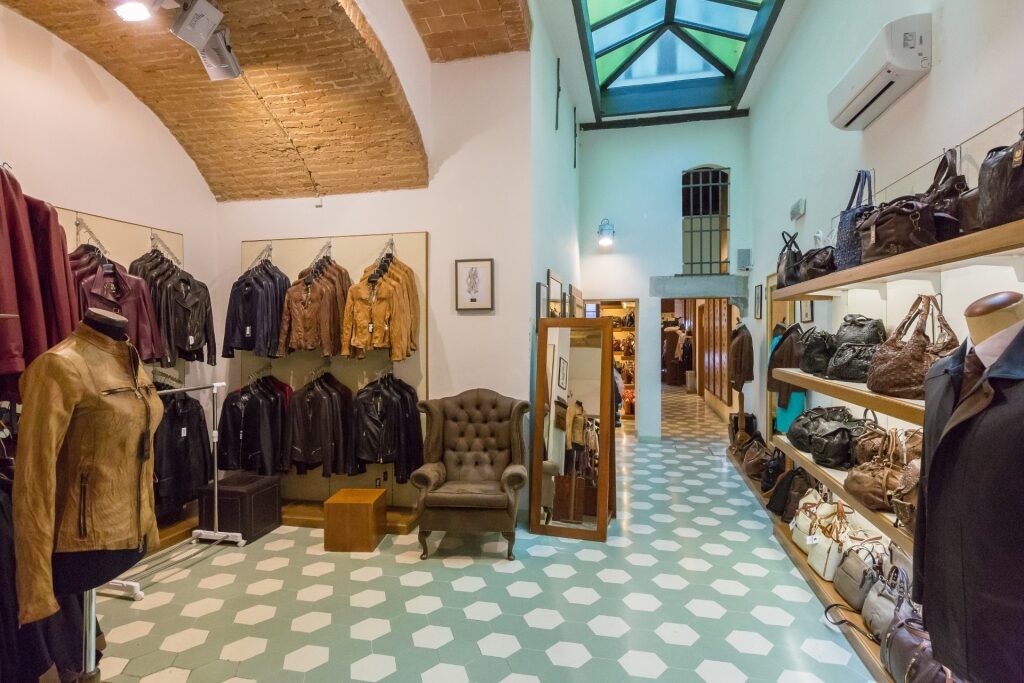
Shop in Florence
Tuscany gave the fashion world such names as Roberto Cavalli, Ferragamo, and Gucci.
All three of these world-famous brands emerged from Florence, which is not only the regional capital of Tuscany but also its fashion capital. Inhaling the smell of leather from the many stalls hung with purses in the historic center, you can understand how clothes making has been an integral part of the local economy since the medieval era.
You’ll find Gucci’s HQ in the grand Palazzo della Mercanzia. This temple to fashion exhibits dresses worn on the Oscars red carpet as well as plenty of the latest couture to buy yourself. On Via de Tornabuoni you’ll find the flagship Ferragamo store as well as its engaging museum about Salvatore’s rise from humble shoemaker to fashion icon.
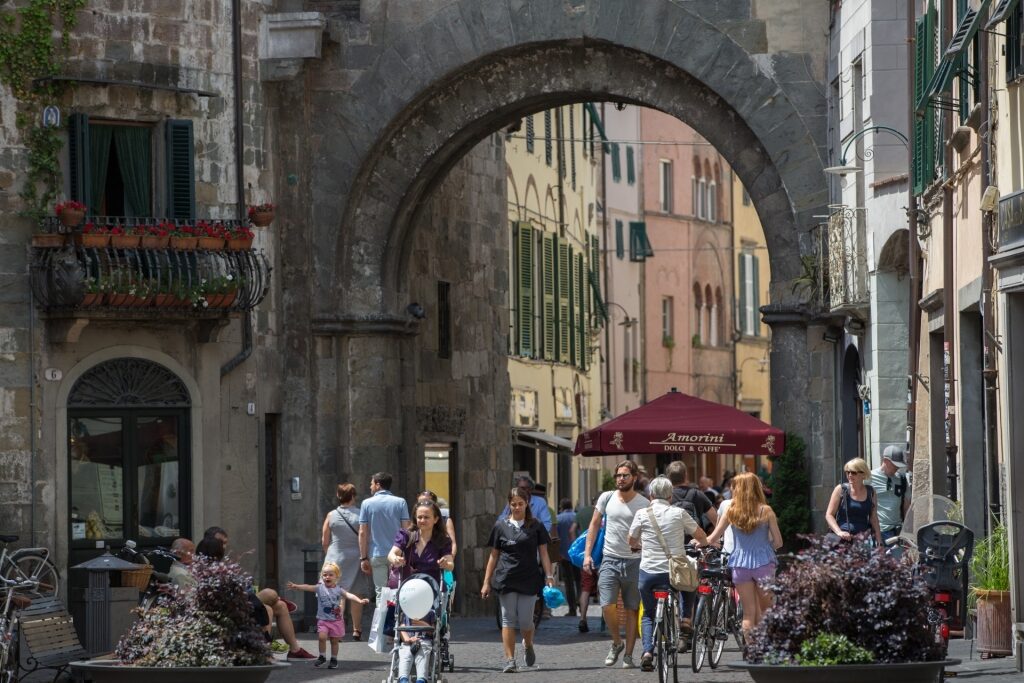
Lucca
Tuscany has other fashion centers beyond the boutiques of Florence. The walled city of Lucca offers one of the region’s most enjoyable shopping experiences in its narrow old town lanes. Or visit the Gori & Zucchi museum near Arezzo, with its exhibition of over 2,000 pieces of exquisitely wrought jewelry.
Etruscans
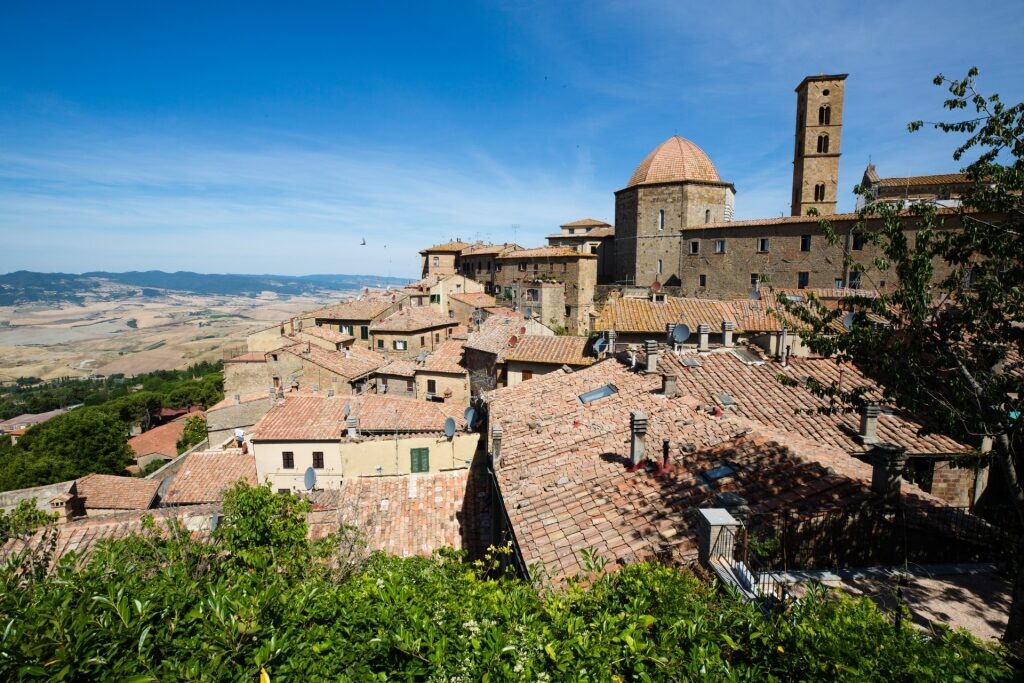
Volterra
An important civilization that dominated central Italy before the inexorable rise of the Romans, the Etruscans have been viewed, rightly, as a precursor to those world-renowned empire builders.
Much of Etruscan society was adopted and absorbed into the developing Roman civilization, however, in Tuscany, their distinctive culture remains tangible.
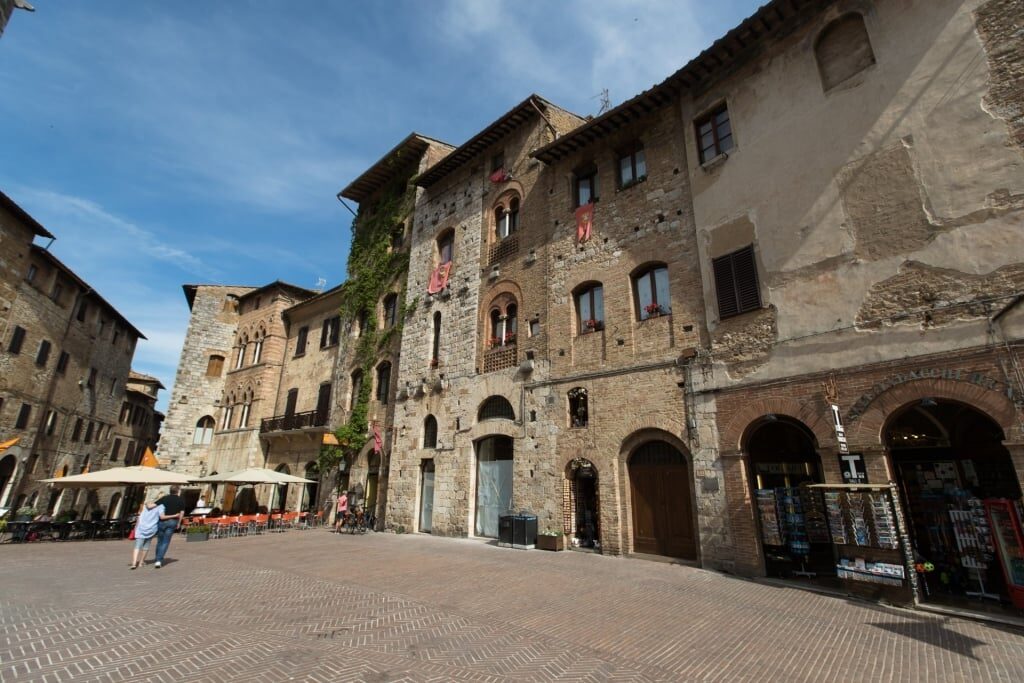
Volterra
Volterra is one of the chief towns which offers a link to the Etruscan era. Its Guarnacci Museum exhibits pieces of their statuary and sculpture. Volterra also contains an Etruscan Necropolis, city gate, temple ruins, and the remains of the original Etruscan town’s defensive walls.
Lari is another attractive town to visit that has Etruscan remains, while the Parco Acheologico di Roselle in Grosseto encompasses the ruined footprint of an entire Etruscan city.
Marble
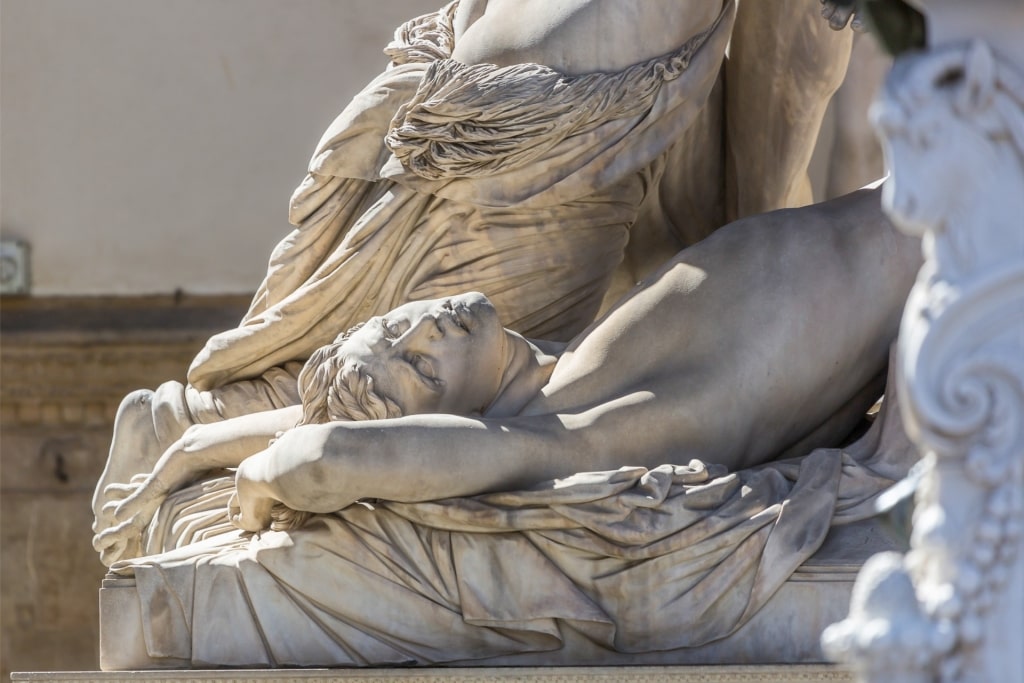
Marble sculptures in Florence
Access to the right materials was one of the key elements that helped Italy toward cultural dominance in the medieval era.
Marble was one of these key materials. In Tuscany, the quarries near Carrara became famous as a source of creamy white marble that, due to its luster and smoothness, was the preferred sculptural material for artists such as Michelangelo and Donatello.
You can find this handsome town north of the coastal resort of Viareggio, in the foothills of the Apuan Alps. Be ready to learn about all things marble at Carrara’s Civic Marble Museum, and its application by one of the material’s most expert proponents at CARMI—the Carrara and Michelangelo Museum.
It’s also possible to tour the quarries, which from a distance look like brilliant white etchings in the slate grey mountainsides.
Gorgeous Green Spaces
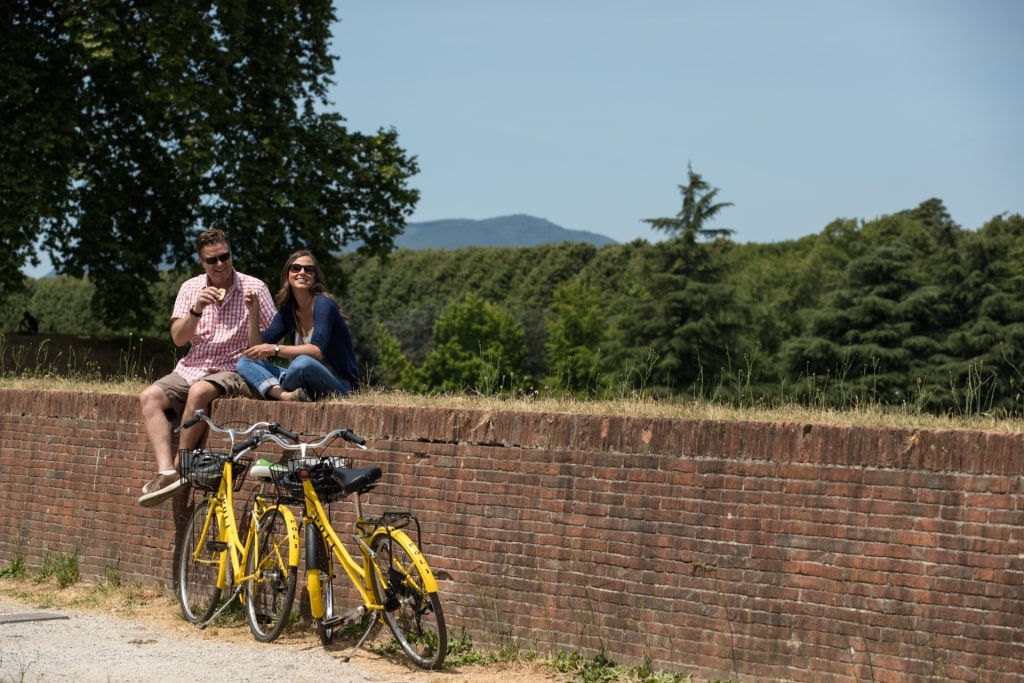
Lucca
Tuscany is famous for its picturesque hills, endlessly painted in sunset hues by local artists. However, this region is also home to some of Italy’s most beautiful gardens and striking parks.
The 16th-century Boboli Gardens is the most high-profile. An enticing green space behind the Pitti Palace in Florence, the Boboli was a groundbreaking creation at the time. Its 100 acres became the template for the “Italian Style” of garden; think meticulous boxwood hedges, symmetrical design, and mythological statuary frolicking in fountains.
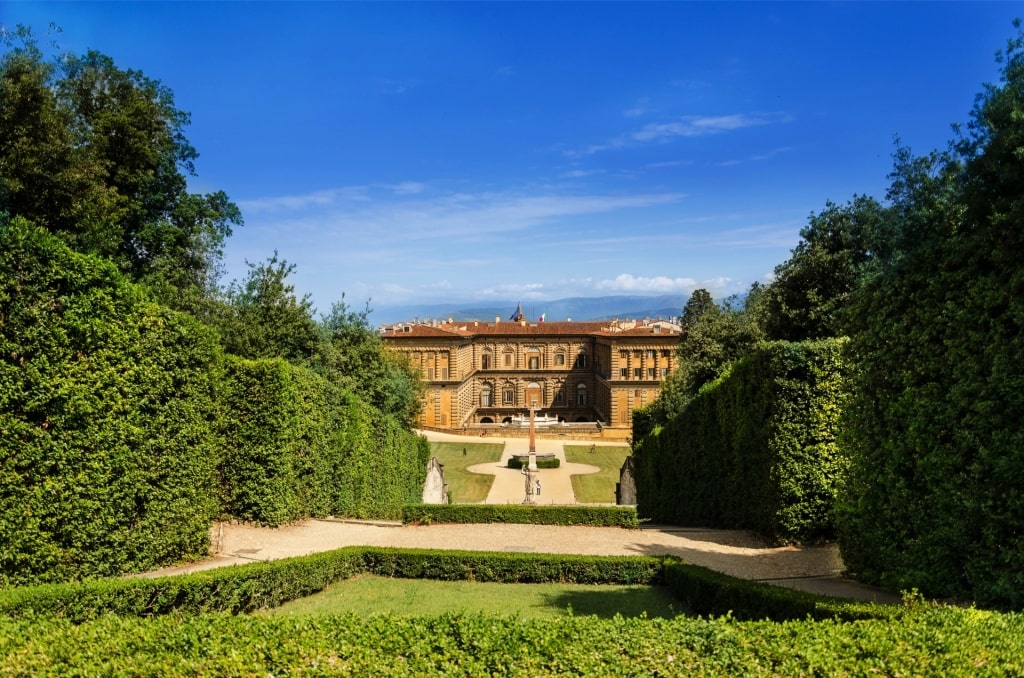
Boboli Gardens, Florence
A Tuscan green space with an entirely different vibe is the raised park that covers the tops of old town Lucca’s defensive walls. This over-a-mile-long public park had its genesis in the 19th century. Today, joggers pass locals relaxing on benches, while the ramparts are the stage for regular artistic events such as theater and music productions.
Villa Cetinale is another of the headline historic gardens enfolded in the glorious Tuscan hills. Near the city of Siena, this 17th-century garden takes its cue from Boboli, with an exquisite layout full of fountains and head-turning topiary.
Towers
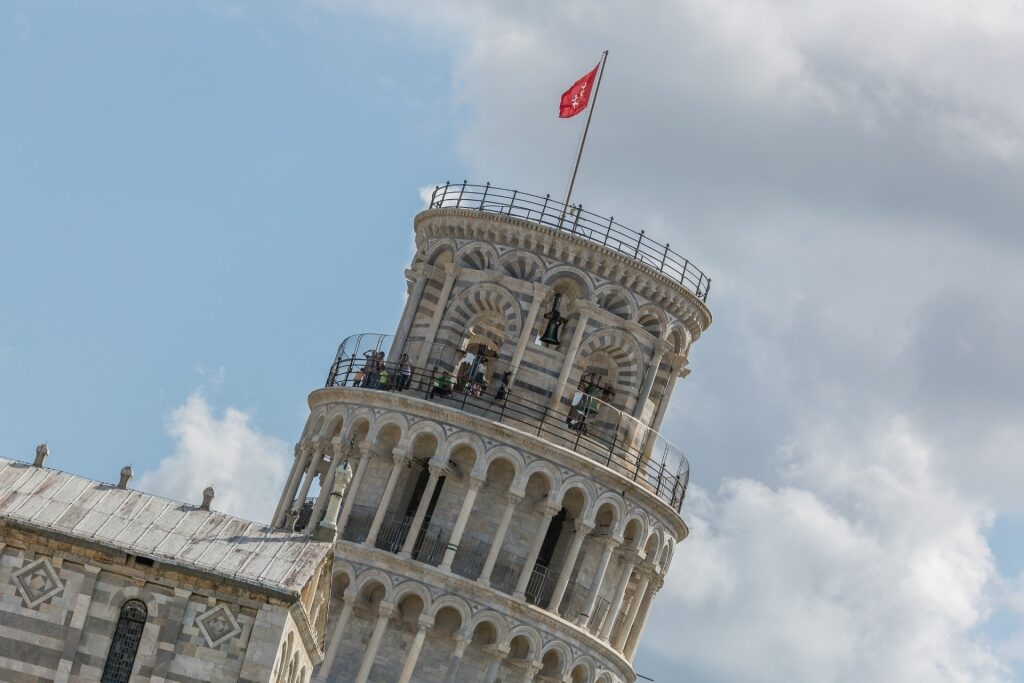
Leaning Tower of Pisa
Of all the things Tuscany is known for, the Leaning Tower of Pisa has to be one of the most famous.
Pisa is, of course, a city in Tuscany. The world-famous leaning tower is only one element of this city’s remarkable Piazza dei Miracoli, where its ornate design is right at home with the astounding baptistery and other buildings found in this UNESCO-listed square. But that tower tilt steals the show.
As Tuscan towers go, those in the UNESCO town of San Gimignano are probably the most high-profile.

San Gimignano
San Gimignano’s vertical architecture is a demonstration of how noble families of the medieval era constructed their skyscrapers as a way to flaunt their wealth. The town’s tallest remaining tower is Torre Grossa, standing since 1310, and open for curious visitors.
Torre Guinigi is another truly distinctive Tuscan tower. With the appearance of a structure that’s sprouted a shaggy mop of hair, this 14th-century structure in Lucca’s old town has holm oaks planted on its top level for a unique roof garden.
The Seaside
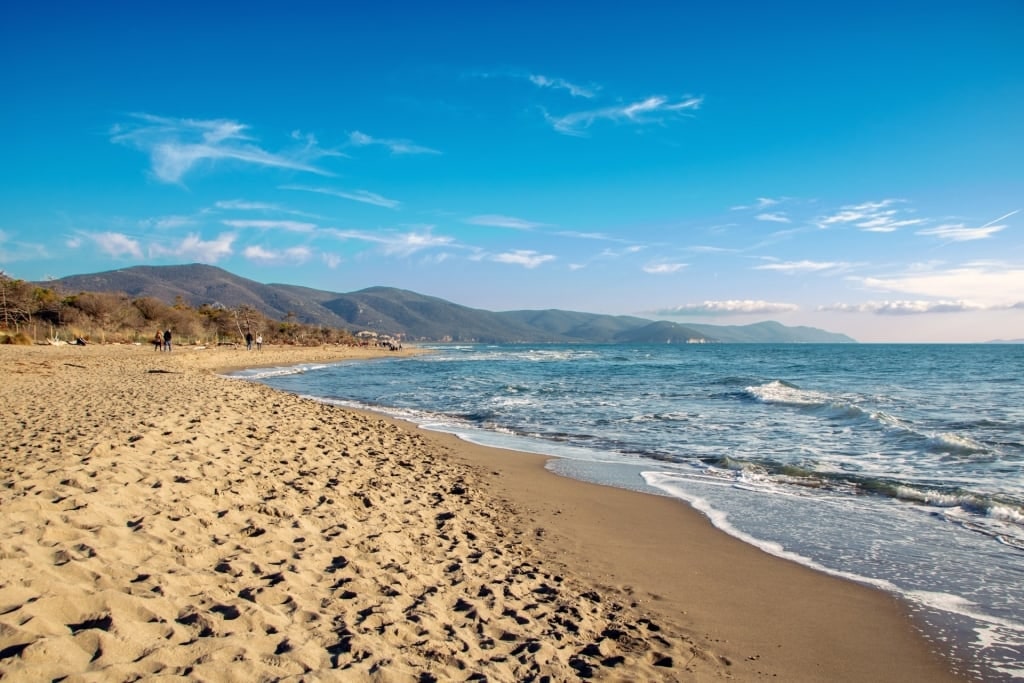
Marina di Alberese
Visitors from outside of Italy might see Tuscany’s main draw as the medieval treasures of its hinterland. For Italians, however, much of this region’s appeal has to do with the spacious sandy beaches on its Tyrrhenian coastline.
In the northern part of the region, this ribbon of blissful beach is called Versilia. Backed by the scenic Apuan Alps, it’s a popular staycation destination for Italians, served by resort towns such as historic Viareggio and, a little to the north, the exclusive Forte dei Marmi.
However, Tuscany has another aspect to its coastal offering. In its southwest is the Maremma—the region’s elemental landscape, where the carefully maintained wine estates give way to stunning grasslands, nature reserves, and Italian beaches of raw beauty such as Marina di Alberese.
Cathedrals
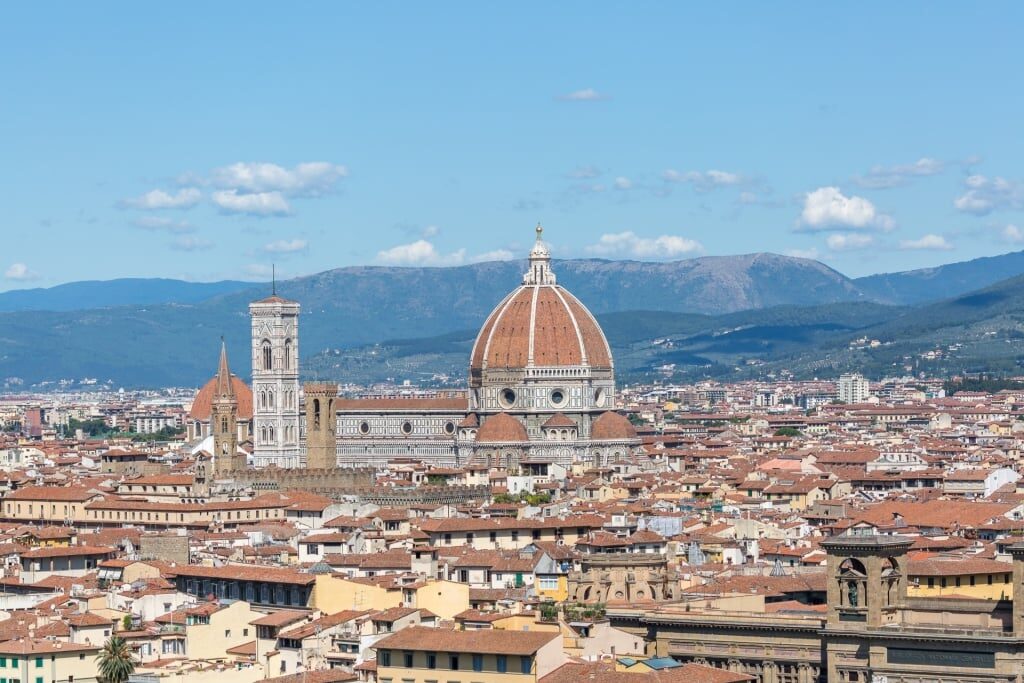
Duomo Santa Maria del Fiore, Florence
Anyone traveling to this staunchly Catholic country, the home of the Vatican, knows that they’re about to see some of the world’s most awe-inspiring cathedrals.
In Tuscany, you have two of the most breathtaking. They belong to those historic rivals, Florence and Siena, and so, ultimately, you have to choose which you prefer. Assisting in that is that these two places of worship are like chalk and cheese.
The Duomo Santa Maria del Fiore bulges elegantly up from the maze of terracotta rooftops in Florence’s historic center. Its stunning dome, designed by Renaissance architect Brunelleschi, was an architectural breakthrough—a self-supporting structure made of masonry that remains the largest of its kind.
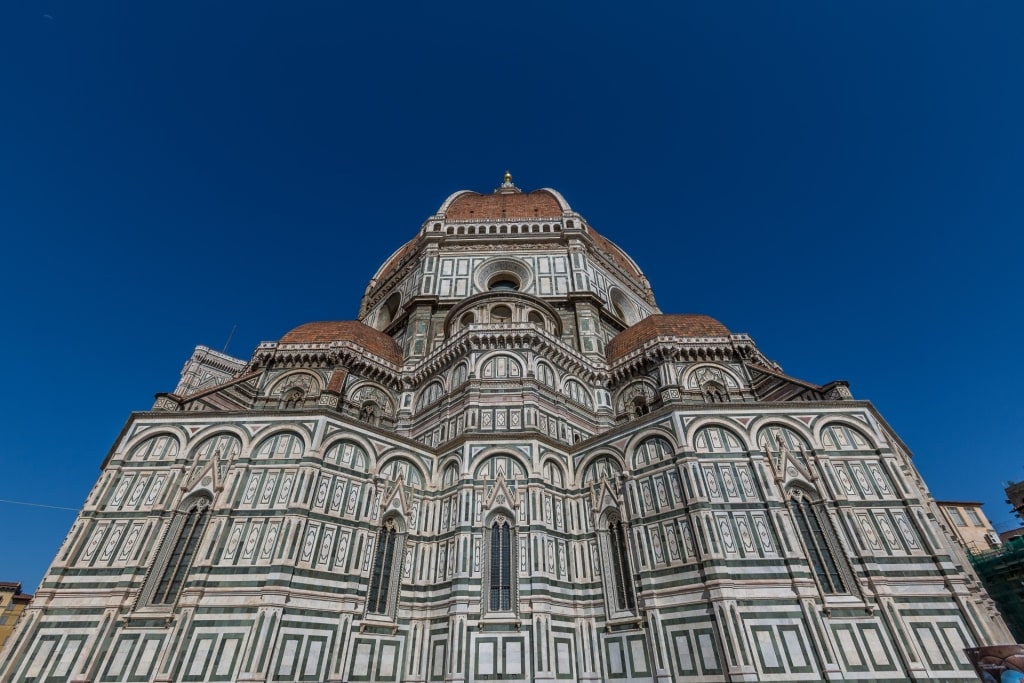
Duomo Santa Maria del Fiore, Florence
Up close, it’s possible to see the Duomo’s luminous mix of locally sourced white, green, and pink marble that makes this immense building seem as light as seafoam. Within are stained glass and frescos executed by leading Renaissance artists.
The Duomo di Siena is another thing entirely. A gothic cavern of gilt and striped marble columns, its maximalist effect seems almost purposefully done to be as distinct from Florence as possible.
Read: Best Things to Do in Tuscany
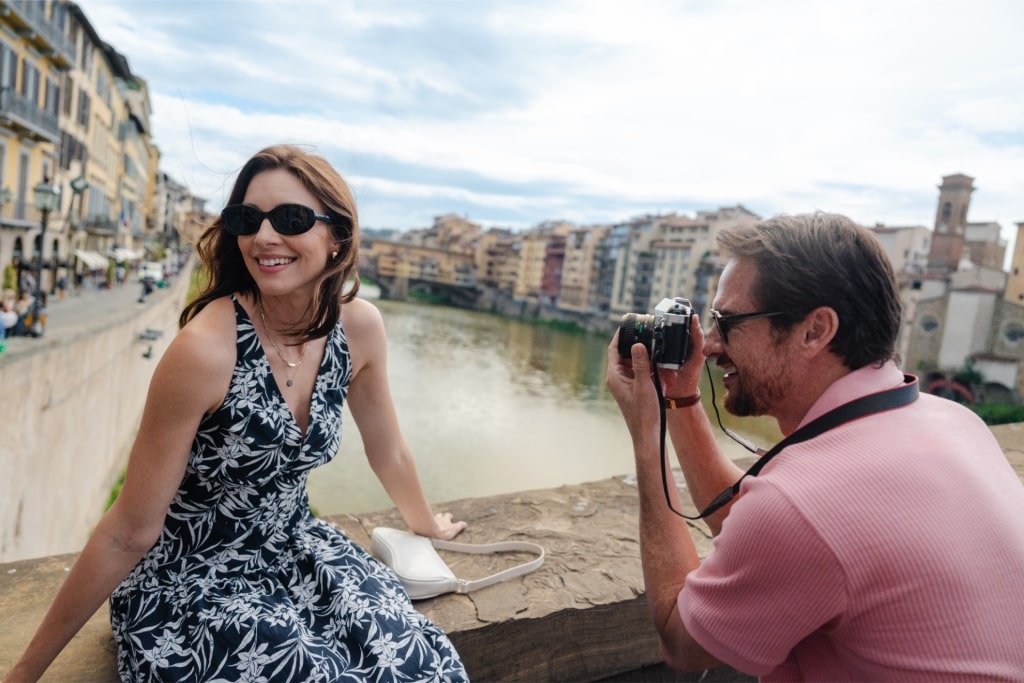
Ponte Vecchio, Florence
What is Tuscany famous for? Find out more about this spellbinding region for yourself on one of Celebrity’s cruises to Florence.
